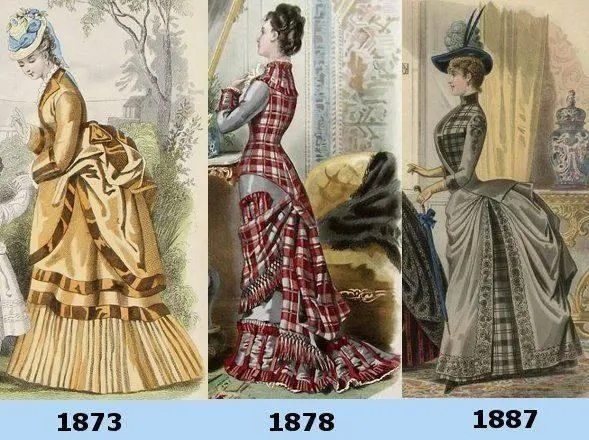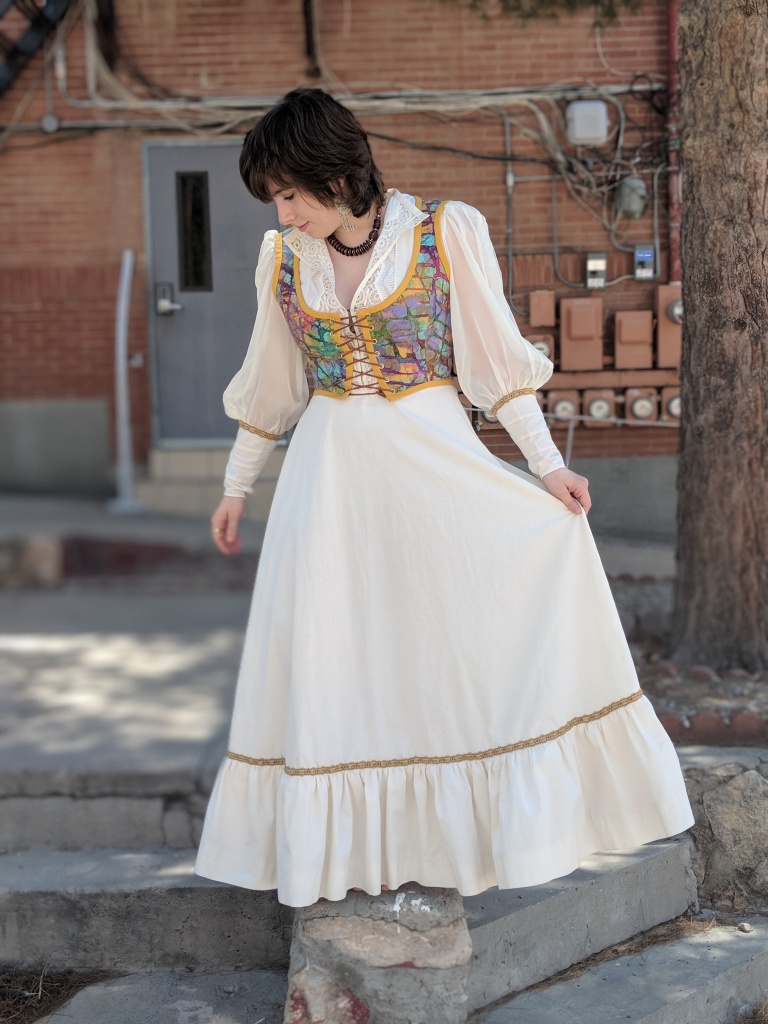
. . .what is your favorite AND least favorite era of fashion history? Why?
I have gotten some great answers from people over the years! My own answers have changed quite a bit as well! Some folks, like myself, just don’t get the hype for certain styles, others have spent time working in theater productions that have absolutely ruined a certain look for them. Some people didn’t even start sewing until a movie or TV show literally came out of nowhere and changed their life!
Here are my own answers and a little bit of my personal history with sewing!
I Don’t Get The Hype – Regency and Victorian.
I know that the Netflix series came along and absolutely blew up Regency sewing for a lot of people. Enough has been said about the historical accuracy of the costumes and since it’s not really my area of interest, I’ll keep my opinions to myself. I will say that anything that gets people into historical sewing can’t be all bad! I prefer to let people be excited and have fun, they’ll learn about what makes something historically accurate if they really want to, otherwise there’s nothing wrong with liking a pretty dress you saw on T.V! I feel like Regency never really goes out of fashion thanks to Jane Austen and the enormous back-catalogue of movie and TV shows based on her work, and for good reason! Ms. Austen’s characters and stories are truly timeless, its no wonder that people would want to recreate the looks. That being said, I have never been tempted to make one for myself. I will say that I think Regency fashion was just about the high-water mark for men’s fashion. There is just something about those jackets.


I don’t think I’m exaggerating when I say that “Victorian” fashion takes up a massive share of the historical sewing world. I use air quotes because, as many have pointed out, there’s a lot of very different looks that get swept up under that one label. To get technical, Victorian fashion can be anything from the 1840s to about 1900. That’s a lot of time for things to change, especially with the Industrial Revolution in full swing. Even though I’ve never wanted to make any 19th century looks for myself, it’s an incredibly interesting period of fashion history, far too complex for me to sum up here.

I will give Victorian fans some credit, as there are so many poor examples of Victorian fashion in film and TV, it’s easy to get the wrong idea about the various eras contained within. There are so many talented sewists out there who are really putting the work in and making garments that look like they were stollen by a time traveler.
The Good Stuff – Edwardian and 1970s
Like a lot of people, my intro to sewing vintage clothing started with wanting to recreate looks from the 1950s. I had a very surface level understanding of what the looks of the era were all about and at the time the big pattern companies were starting to republish their older patterns. I’ll never forget the strangle hold twee vintage dresses had on 2010s hipster fashion. It did not take long at all for me to get engulfed by the world of fashion history and historical sewing. Then, like a distant coast line appearing out of the mist, I discovered the Edwardian Era. Similar to Victorian Fashion, you can’t really nail down a single silhouette as Edwardian, but if you had to you could sum up the much shorter era by saying, “it’s all a bit much, really.” From the inside out, Edwardian fashion is very demanding. I think this is why it’s somewhat rare to see it really executed well. As with all historical fashion, you must lay the proper foundation, and for the early 1900s that means a straight front (also known as ‘S-bend’ corset.) Combinations, corset, corset cover and enough petticoats to sail a ship, before you even get to the dress which can be such a confusing mish-mash of ribbon, lace, silk, velvet, and embroidery its hard to tell front from back. I love every bit of it.


I’ve caught a lot of heat for proclaiming my undying love for 1970s sewing patterns. A lot of people I’ve talked to don’t think that the 70s should count as vintage/historical sewing, and it’s a fair point. It doesn’t bother me when people aren’t interested. I love ever facet of fashion from the 70s from mainstream sewing patterns to looks from the various counter culture movements of the time. Just like the Victorian era, there was a LOT going on politically and it is clearly reflected in the clothing people wore. I also don’t think it’s hard to see how many designers were influenced by fashion history, especially the Edwardian era.

1970s (possibly late 60s) Gunne Sax wedding dress. I think this is a great example of the Edwardian inspiration in the 1970s. the shape of the skirt and the massive ruffle stand out to me the most.

Seriously, whats not to love about these looks?! In just looking at the silhouette, I think you could make the case that there was even some Regency inspiration for this colorful trio!

One of my favorite trends of the era were the loud coordinate sets. I won’t rest until floral print pant suits are “in” again. I have tons of 70s patterns in my collection, the hard part is finding fabric that really works to make the whole look cohesive and believable!

I confine myself to the 20th century. Don’t worry, I’m happy here and I love seeing what other people make from every chapter of fashion history. Out of everything I’ve ever made, I would say at least half have been from the 70s, and most of those were from the year 1976! Out of everything I’ve made, hands down my favorite (and project I’ve gotten the most compliments on) has been the dress I made from Simplicity 7389. Listen, it is so much fun just wearing a wedding dress out and about.

The biggest change I made was to the neckline. I feel like I just get swallowed alive when there’s too much fabric around my neck. The sleeves and skirt were kept true to the pattern. I didn’t have a lot of money for this project, so I just used the cheapest muslin I could find for the dress and a simply awful poly chiffon for the sleeves. I did spend money to get a really nice batik for the vest and I’m glad I did because I feel like it just makes the whole outfit. This is just about the high water mark of my vintage sewing. I’ve worn this dress out dozens of times, probably more than the cheap material was really meant for. Sadly, after many years and one whole baby it just doesn’t fit comfortably anymore. I love looking at pictures of it in its prime, the day after I finished working on it, but I can’t help but think I could make a sequel that would blow this dress away!
If you have any opinions about different eras of fashion history, I would absolutely love to hear them!